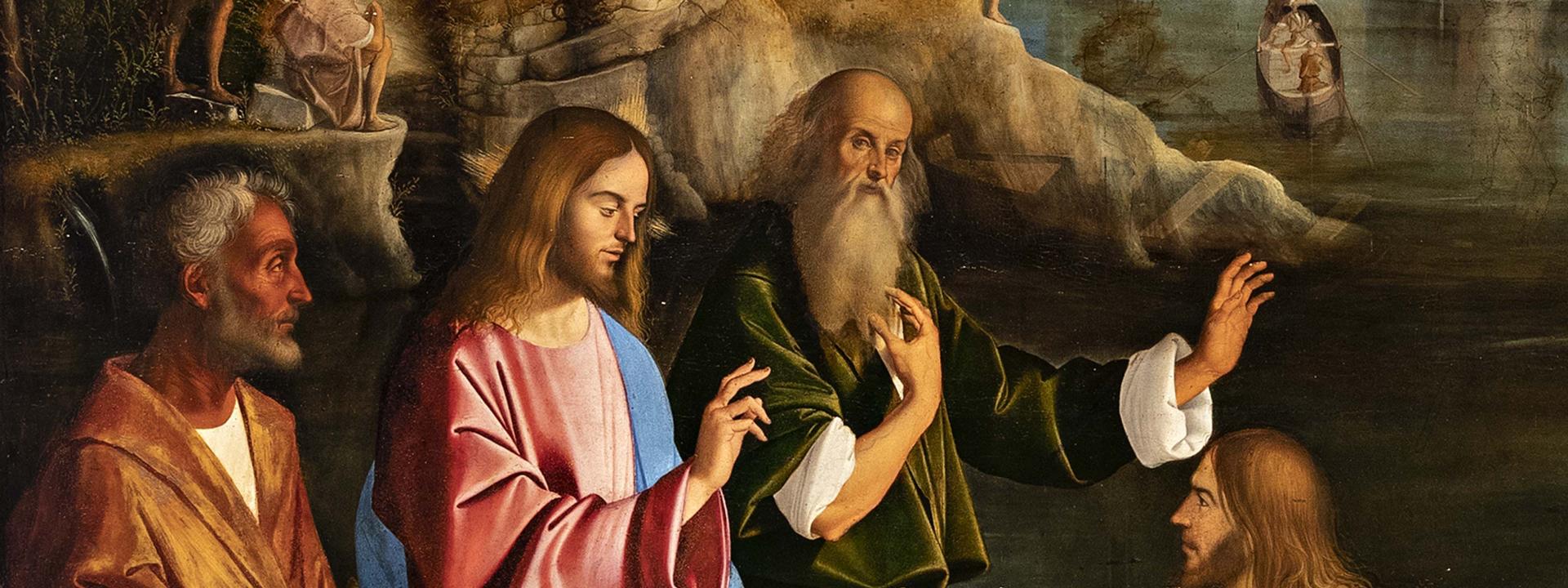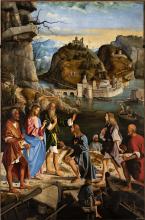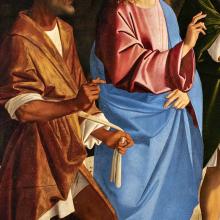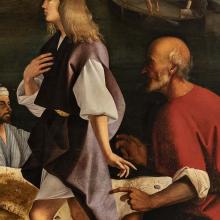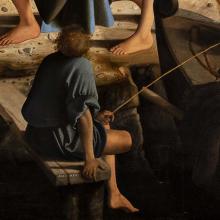This large altarpiece originally hung above the main altar in the church of Sant’Andrea della Certosa on the island of La Certosa in the Venetian lagoon. The church was destroyed following the Napoleonic Suppression in 1806. The painting depicts Christ calling James and John, the sons of Zebedee, from among the humble fishermen on the Sea of Galilee, a subject that would have resonated with the islanders, whose main occupation was the same. The artist has used elements of strong realism both in the foreground and the background. The work was commissioned by Carthusian Patriarch Andrea Suriano (1504–1508) and the choice of subject matter and symbolism was probably meant to encourage the monks to renew their vocation by likening them to the first apostles. Saint Andrew, to whom the church was dedicated, is positioned to the left of Jesus and is specular to Saint Peter, thus conferring on him a prominent position. The stance of the figures in the foreground recalls the ceremonies depicted in Carpaccio’s Saint Ursula Cycle. The work still displays Alvise Vivarini’s influence, but the rendering of the figures in particular places this work at the beginning of the artist’s middle period, as confirmed by the cartouche, dated 1510. Basaiti reprised the theme about five years later for the Calling of the Apostles now held by the Kunsthistorisches Museum in Vienna and which may have come from the seventeenth-century collection of Bartolomeo Della Nave.
- Visit
- What's on
- On-line collections
- SEATS
- Exhibitions
- EDUCATION PROGRAMMES
- Online Activities
- Artworks not on display
- SPACES AND IMAGES CONCESSIONS
- SUPPORT US
-
TRANSPARENT ADMINISTRATION
- GENERAL PROVISIONS
- ORGANISATION
- CONSULTANTS AND COLLABORATORS
- STAFF
- PERFORMANCE
- Bandi e gare
- CONTRACTS
- Determine
- PROVVEDIMENTI
- BALANCE SHEETS
- GRANTS, CONTRIBUTIONS, SUBSIDIES, ECONOMIC ADVANTAGES
- ADMINISTRATIVE PAYMENTS
- LEGAL PROCEDURES
- ADMINISTRATIVE SUPERVISION AND EVALUATION
- ACCESSO CIVICO
- SERVICES PROVIDED
- OTHER CONTENTS
- CREDITS
- CONTACT
- English
- italiano
